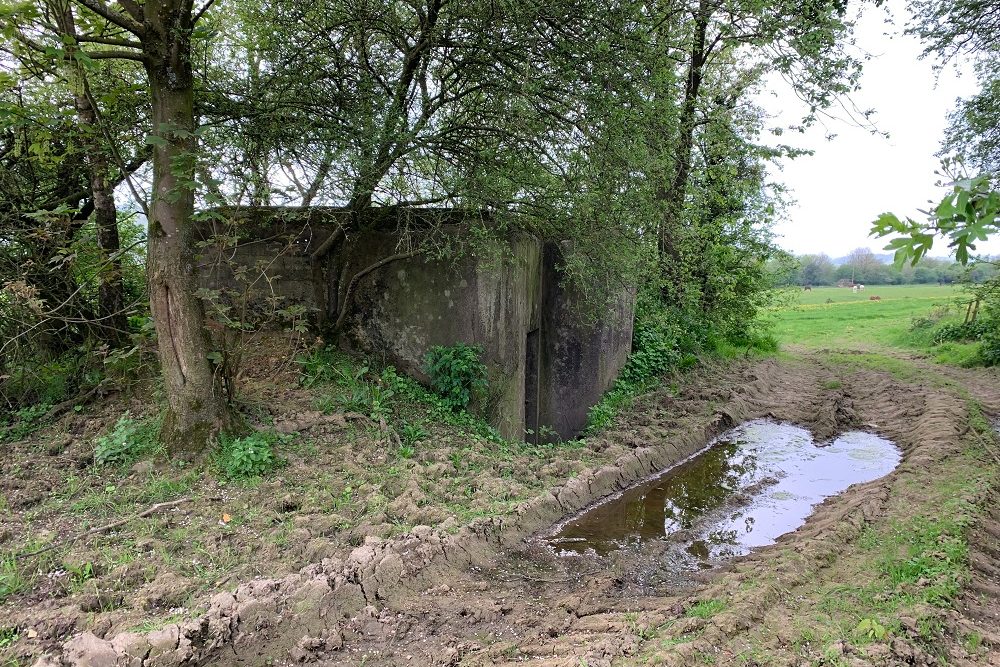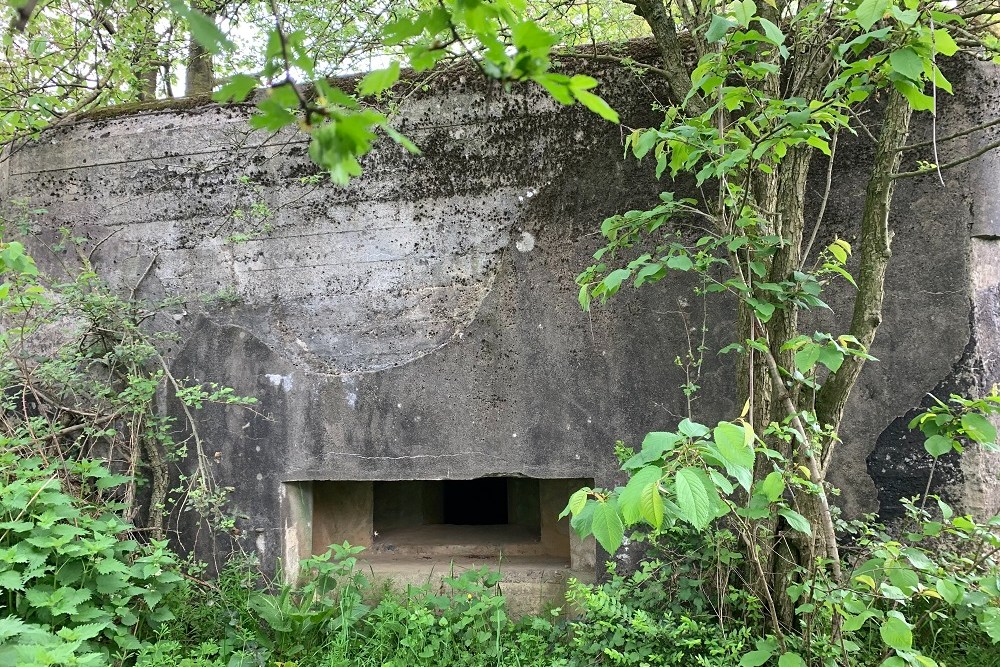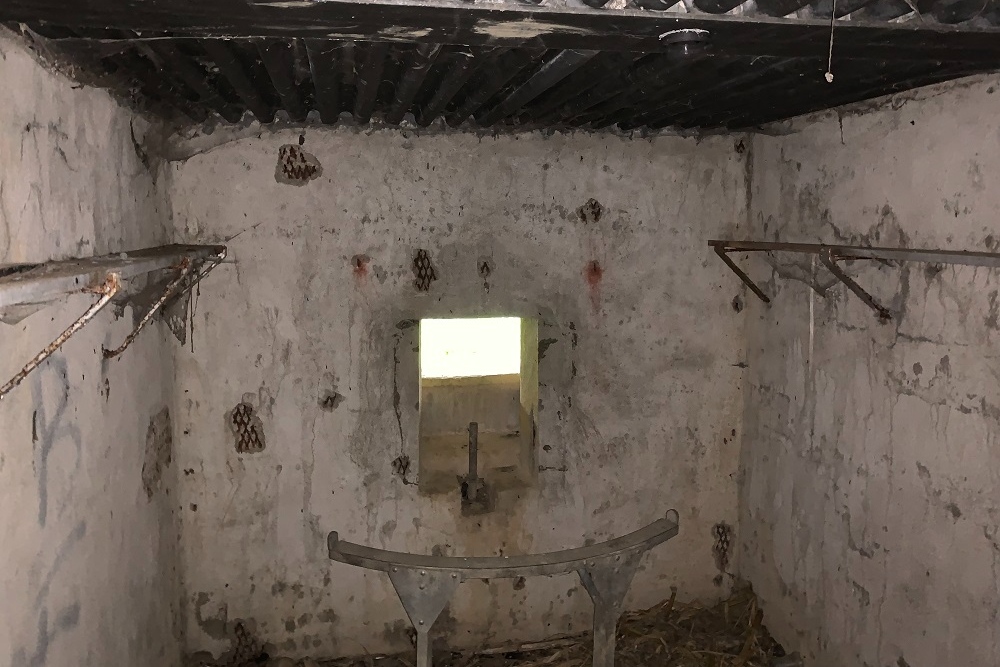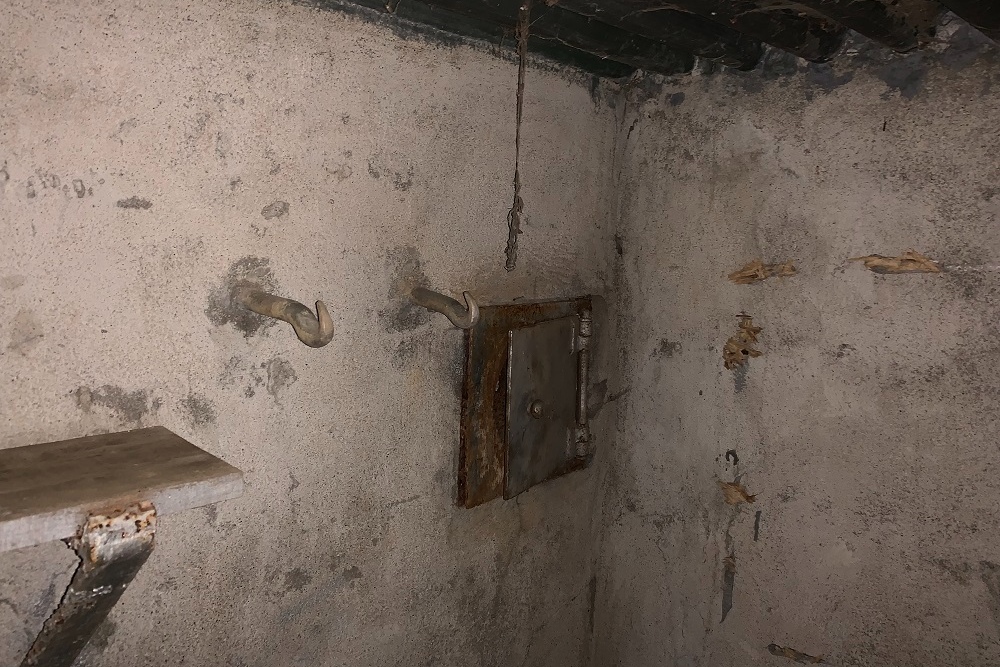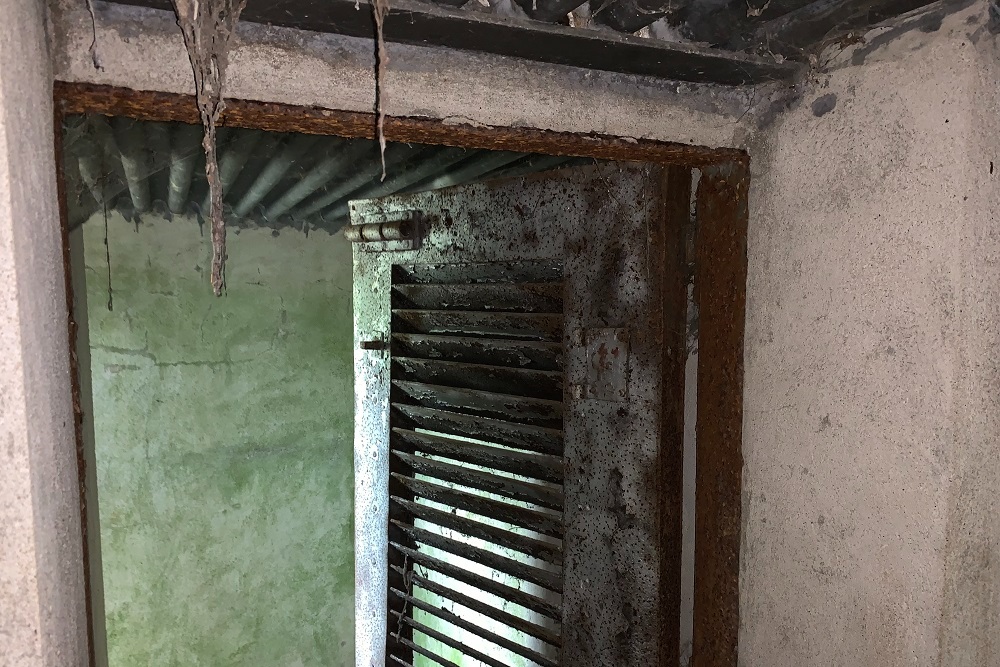Bunker CS 6 Fraiture
This is bunker CS 6 from the sector Comblain-Sougné of the 1st line of defense of the city of Liège, la Position Fortifiée de Liège 1 (PFL 1).
This was the last sector of the PFL 1. This sector ran west into sector Sougné-Becco (SB). Sector CS consisted of 31 bunkers to the south and west of the once planned but never built Fortres of Sougné-Remouchamps.
The bunker is located in a forest plot in the middle of a meadow. It a smaller bunker with one gun opening for a machine gun. The bunker is accessible and still has the original inner and outer door. Somewhat strangely, this outer door is of the barred type. This would allow an enemy to quickly gain access to the bunker. The walls on all sides are 1.3 meters thick and of reinforced concrete. They could withstand shelling with 150mm shells.
The bunkers were built in the early 1930's.
Inside, the mount on which the machine gun could be moved from left to right is still present. The metal hatch gave access to the grenadegully for proximity defense. One could drop a hand grenade through this gully. It then fell out through an opening at the bottom of the bunker.
The two round holes above the gun opening for ventilation are not present in this bunker. This is probably because the bunker had 'open doors'. Both the inner lamella (photograph 5) door and the barred door were smoke-gas permeable. On the one hand for fresh air, but on the other hand for exhaust of fumes due to machinegun salvo's. In no time, the room would be full of smoke gasses, which was intoxicating for the soldiers present.
The hooks on the wall were for hanging equipment. The shelf supports were meant to put materials away so the soldiers could not trip over them. It should be remembered that these (and most bunkers) were not connected to the electricity grid. A storm lamp could be hung from the ceiling, on a hook provided for that purpose. This was the only lighting in the bunker.
The shelves on the shelf supports are not original and were added later.
The metal hatches for the gun port were removed after the war. These were sold as scrap when the bunkers had lost their strategic value for the defense of Belgium.
Do you have more information about this location? Inform us!
Source
- Text: Ed Lewandowski
- Photos: Ed Lewandowski
Nearby
Museum
Point of interest
Monument
- Memorial Killed Resistance Fighters Presseux - Sprimont
- War Memorial Oneux - Comblain-au-Pont
- War Memorial Cemetery Chanxhe - Sprimont
Cemetery
- Belgian War Grave Chanxhe - Sprimont
- Belgian Graves Veterans Comblain-au-Pont - Comblain-au-Pont
- Belgian War Graves Comblain-au-Pont - Comblain-au-Pont
Fortification
- Bunker CS 5 Fraiture - Fraiture
- Bunker CS 7 Fraiture - Fraiture
- Bunker CS 4 Rivage - Rivage (Sprimont)
